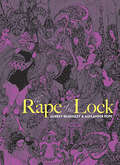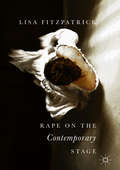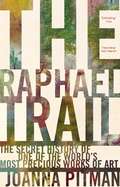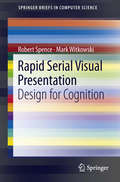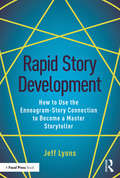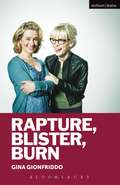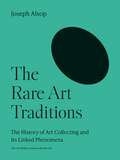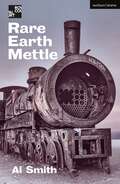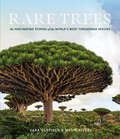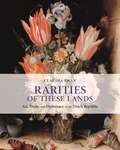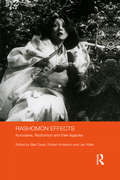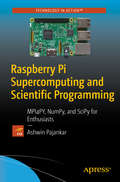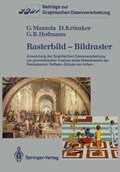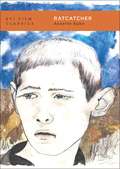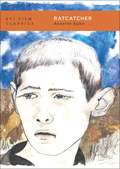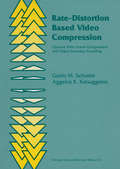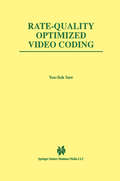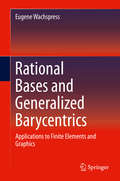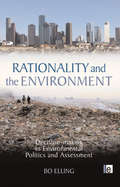- Table View
- List View
The Rape of the Lock: An Heroi-comical Poem... (Dover Fine Art, History Of Art Series)
by Alexander Pope Aubrey BeardsleyOnly rarely in publishing history has the ideal edition of a literary work been created, where text, typography, and illustrations complement one another perfectly. Among the few examples are the Kelmscott Chaucer, Baskerville's Milton, and Beardsley's Salome. Another such book is the 1896 edition of Pope's The Rape of the Lock, illustrated by Aubrey Beardsley.Beardsley's elaborate drawings for The Rape of the Lock were created during the last phase of his brief career. This nearly Romantic period, characterized by rich, brilliantly imagined decoration and ornamentation and by high textual contrasts, was perfectly suited to the blend of mock-heroic, satire, and delicate fancy of Pope's poems. As Beardsley's biographer R. A. Walker wrote, "These drawings show a verve, a wit and appreciation of the poem than can scarcely be matched in English literature." Using his unique line and "black blot" technique, Beardsley created a masterpiece of design and mood.This Dover edition reproduces the first edition: the complete text of the five-canto poem, notes, seven full-page drawings, two half-page drawings, and the original cover design by Beardsley.
Rape on the Contemporary Stage
by Lisa FitzpatrickThis book investigates the representation of rape in British and Irish theatre since the second wave of the Women’s Movement. Mainly focusing on the period from the 1990s to the present, it identifies key feminist debates on rape and gender, and introduces a set of ideas about the function of rape as a form of embodied, gendered violence to the analysis of dramaturgical and performance strategies used in a range of important and/or controversial works. The chapters explore the dramatic representation of consent; feminist performance strategies that interrogate common attitudes to rape and rape survivors; the use of rape as an allegory for political oppression; the relationships of vulnerability, eroticism and affect in the understanding and representation of sexual violence; and recent work that engages with anti-rape activism to present women’s personal experiences on stage.
Rape on the Contemporary Stage
by Lisa FitzpatrickThis book investigates the representation of rape in British and Irish theatre since the second wave of the Women’s Movement. Mainly focusing on the period from the 1990s to the present, it identifies key feminist debates on rape and gender, and introduces a set of ideas about the function of rape as a form of embodied, gendered violence to the analysis of dramaturgical and performance strategies used in a range of important and/or controversial works. The chapters explore the dramatic representation of consent; feminist performance strategies that interrogate common attitudes to rape and rape survivors; the use of rape as an allegory for political oppression; the relationships of vulnerability, eroticism and affect in the understanding and representation of sexual violence; and recent work that engages with anti-rape activism to present women’s personal experiences on stage.
The Raphael Trail: The Secret History of One of the World's Most Precious Works of Art
by Joanna PitmanRaphael's St George and the Dragon is the work of a genius - an exquisitely rendered vision of heroism and innocence by one of the greatest painters of all time. Yet the painting's creation is only the beginning of a fascinating story that spans centuries of power play and intrigue, taking in a cast of characters both colourful and terrifying.For the young Raphael the painting was an expression of his growing talents and a crucial step in his ascent to the peak of the Renaissance art world. But for a succession of jealous owners it became a symbol of power and prestige. Painted in Italy, St George and the Dragon was sent to England as a gift for Henry VII in exchange for the prestigious knighthood of the Garter, art being traded for honour. The painting then mysteriously disappeared for a century before re-emerging as one of the key works in the great collection of art built up by Charles I, only to be sold when the collection was forcibly broken up after his execution.When Catherine the Great, a monarch of enormous appetites - political, sexual and cultural - later heard the painting was again on the market, she dispatched the famous philosopher Diderot to add it to her vast collection at the Hermitage in Russia. Treated both as an icon and as a Western masterpiece, St George and the Dragon survived fire and the Russian Revolution, only to be sold by the arch-Communist Stalin to Andrew Mellon, Capitalism's chief priest and one of the last US Robber Barons, in a secret and utterly illicit transaction.Exceptionally written and breathlessly paced, The Raphael Trail shows how the greatest beauty in art can provoke the basest instincts in man.
Rapid Serial Visual Presentation: Design for Cognition (SpringerBriefs in Computer Science)
by Robert Spence Mark WitkowskiA powerful new image presentation technique has evolved over the last twenty years, and its value demonstrated through its support of many and varied common tasks. Conceptually, Rapid Serial Visual Presentation (RSVP) is basically simple, exemplified in the physical world by the rapid riffling of the pages of a book in order to locate a known image. Advances in computation and graphics processing allow RSVP to be applied flexibly and effectively to a huge variety of common tasks such as window shopping, video fast-forward and rewind, TV channel selection and product browsing. At its heart is a remarkable feature of the human visual processing system known as pre-attentive processing, one which supports the recognition of a known image within as little as one hundred milliseconds and without conscious cognitive effort.Knowledge of pre-attentive processing, together with extensive empirical evidence concerning RSVP, has allowed the authors to provide useful guidance to interaction designers wishing to explore the relevance of RSVP to an application, guidance which is supported by a variety of illustrative examples.
Rapid Story Development: How to Use the Enneagram-Story Connection to Become a Master Storyteller
by Jeff LyonsThis book offers a unique approach to storytelling, connecting the Enneagram system with classic story principles of character development, plot, and story structure to provide a seven-step methodology to achieve rapid story development. Using the nine core personality styles underlying all human thought, feeling, and action, it provides the tools needed to understand and leverage the Enneagram-Story Connection for writing success.Author Jeff Lyons starts with the basics of the Enneagram system and builds with how to discover and design the critical story structure components of any story, featuring supporting examples of the Enneagram-Story Connection in practice across film, literature and TV. Readers will learn the fundamentals of the Enneagram system and how to utilize it to create multidimensional characters, master premise line development, maintain narrative drive, and create antagonists that are perfectly designed to challenge your protagonist in a way that goes beyond surface action to reveal the dramatic core of any story.Lyons explores the use of the Enneagram as a tool not only for character development, but for story development itself. This is the ideal text for intermediate and advanced level screenwriting and creative writing students, as well as professional screenwriters and novelists looking to get more from their writing process and story structure.
Rapid Story Development: How to Use the Enneagram-Story Connection to Become a Master Storyteller
by Jeff LyonsThis book offers a unique approach to storytelling, connecting the Enneagram system with classic story principles of character development, plot, and story structure to provide a seven-step methodology to achieve rapid story development. Using the nine core personality styles underlying all human thought, feeling, and action, it provides the tools needed to understand and leverage the Enneagram-Story Connection for writing success.Author Jeff Lyons starts with the basics of the Enneagram system and builds with how to discover and design the critical story structure components of any story, featuring supporting examples of the Enneagram-Story Connection in practice across film, literature and TV. Readers will learn the fundamentals of the Enneagram system and how to utilize it to create multidimensional characters, master premise line development, maintain narrative drive, and create antagonists that are perfectly designed to challenge your protagonist in a way that goes beyond surface action to reveal the dramatic core of any story.Lyons explores the use of the Enneagram as a tool not only for character development, but for story development itself. This is the ideal text for intermediate and advanced level screenwriting and creative writing students, as well as professional screenwriters and novelists looking to get more from their writing process and story structure.
Rapture, Blister, Burn (Modern Plays)
by Gina GionfriddoWomen are running for president. Men are exfoliating. It's all jumbled: you can't read the signs.Can any woman have it all? After university Catherine and Gwen chose opposite paths: Catherine built a career as a rock-star academic, while Gwen built a home with a husband and children. Decades later, unfulfilled in opposite ways, each woman covets the other's life, and a dangerous game begins as each tries to claim the other's territory. Sparks fly and the age-old question arises: what do women really want?Gina Gionfriddo dissects modern gender politics in this breathtakingly witty and virtuosic comedy, set in a small New England college town. Traversing the experiences of women across the generations, this play is a hugely entertaining exploration of a new style of feminism, ripe for the twenty-first century.Rapture, Blister, Burn was commissioned by Playwrights Horizons, where it premiered, with funds from the Harold and Mim Steinberg Charitable Trust. It received its UK premiere at the Hampstead Theatre, London, in January 2014.
Rapture, Blister, Burn (Modern Plays)
by Gina GionfriddoWomen are running for president. Men are exfoliating. It's all jumbled: you can't read the signs.Can any woman have it all? After university Catherine and Gwen chose opposite paths: Catherine built a career as a rock-star academic, while Gwen built a home with a husband and children. Decades later, unfulfilled in opposite ways, each woman covets the other's life, and a dangerous game begins as each tries to claim the other's territory. Sparks fly and the age-old question arises: what do women really want?Gina Gionfriddo dissects modern gender politics in this breathtakingly witty and virtuosic comedy, set in a small New England college town. Traversing the experiences of women across the generations, this play is a hugely entertaining exploration of a new style of feminism, ripe for the twenty-first century.Rapture, Blister, Burn was commissioned by Playwrights Horizons, where it premiered, with funds from the Harold and Mim Steinberg Charitable Trust. It received its UK premiere at the Hampstead Theatre, London, in January 2014.
The Rare Art Traditions: The History of Art Collecting and Its Linked Phenomena (The A. W. Mellon Lectures in the Fine Arts #27)
by Joseph AlsopA cultural and social history of art collecting, art history, and the art marketIn The Rare Art Traditions, Joseph Alsop offers a wide-ranging cultural and social history of art collecting, art history, and the art market. He argues that art collecting is the basic element in a remarkably complex and historically rare behavioral system, which includes the historical study of art, the market for buying and selling art, museums, forgery, and the astonishing prices commanded by some works of art. The Rare Art Traditions tells the story of three important traditions of art collecting: the classical tradition that began in Greece, the Chinese tradition, and the Western tradition. The result is a major original contribution to art history.
Rare Earth Mettle (Modern Plays)
by Al SmithYou don't tell an American to switch off her light; you build her a better light bulb.A leading British doctor with a radical plan to save the NHS and a Silicon Valley billionaire with a radical plan to halt climate change, meet outside an abandoned train on a salt flat in South America.A landscape so bright in its whiteness that it isn't easy to look at, and so uninterrupted in its flatness there's no echo.For Kimsa and his daughter who live there, the arrival of these strangers initially seems like an opportunity. Until they both stake their claim on the land, each following their ruthless pursuit of 'the greater good'.Al Smith's landmark play premieres at the Royal Court following his 2016 hit Harrogate which saw him nominated for Most Promising Playwright at the 2017 Evening Standard Theatre Awards.
Rare Earth Mettle (Modern Plays)
by Al SmithYou don't tell an American to switch off her light; you build her a better light bulb.A leading British doctor with a radical plan to save the NHS and a Silicon Valley billionaire with a radical plan to halt climate change, meet outside an abandoned train on a salt flat in South America.A landscape so bright in its whiteness that it isn't easy to look at, and so uninterrupted in its flatness there's no echo.For Kimsa and his daughter who live there, the arrival of these strangers initially seems like an opportunity. Until they both stake their claim on the land, each following their ruthless pursuit of 'the greater good'.Al Smith's landmark play premieres at the Royal Court following his 2016 hit Harrogate which saw him nominated for Most Promising Playwright at the 2017 Evening Standard Theatre Awards.
Rare Trees: The Fascinating Stories of the World's Most Threatened Species
by Sara Oldfield Malin RiversFilled with more than 300 color photographs, Rare Trees is a stunning survey of the world's most threatened trees.
Rarities of These Lands: Art, Trade, and Diplomacy in the Dutch Republic
by Claudia SwanA vivid account of the exoticism of the Dutch Republic at a critical moment in its cultural and political historyThe seventeenth century witnessed a great flourishing of Dutch trade and culture. Over the course of the first half of the century, the northern Netherlands secured independence from the Spanish crown, and the nascent republic sought to establish its might in global trade, often by way of diplomatic relations with the Ottoman Empire and other Muslim powers. Central to the political and cultural identity of the Dutch Republic were curious foreign goods the Dutch called "rarities."Rarities of These Lands explores how these rarities were obtained, exchanged, stolen, valued, and collected, tracing their global trajectories and considering their role within the politics of the new state. Claudia Swan’s insightful, engaging analysis offers a novel and compelling account of how the Dutch Republic turned foreign objects into expressions of its national self-conception.Rarities of These Lands illuminates the formative years of the Dutch Republic, offering a timely examination of the art, politics, and exoticism of this momentous period in the history of the Netherlands.
Rarities of These Lands: Art, Trade, and Diplomacy in the Dutch Republic
by Claudia SwanA vivid account of the exoticism of the Dutch Republic at a critical moment in its cultural and political historyThe seventeenth century witnessed a great flourishing of Dutch trade and culture. Over the course of the first half of the century, the northern Netherlands secured independence from the Spanish crown, and the nascent republic sought to establish its might in global trade, often by way of diplomatic relations with the Ottoman Empire and other Muslim powers. Central to the political and cultural identity of the Dutch Republic were curious foreign goods the Dutch called "rarities."Rarities of These Lands explores how these rarities were obtained, exchanged, stolen, valued, and collected, tracing their global trajectories and considering their role within the politics of the new state. Claudia Swan’s insightful, engaging analysis offers a novel and compelling account of how the Dutch Republic turned foreign objects into expressions of its national self-conception.Rarities of These Lands illuminates the formative years of the Dutch Republic, offering a timely examination of the art, politics, and exoticism of this momentous period in the history of the Netherlands.
Rashomon Effects: Kurosawa, Rashomon and their legacies (Routledge Advances in Film Studies)
by Robert Anderson Blair Davis Jan WallsAkira Kurosawa is widely known as the director who opened up Japanese film to Western audiences, and following his death in 1998, a process of reflection has begun about his life’s work as a whole and its legacy to cinema. Kurosawa’s 1950 film Rashomon has become one of the best-known Japanese films ever made, and continues to be discussed and imitated more than 60 years after its first screening. This book examines the cultural and aesthetic impacts of Akira Kurosawa’s Rashomon, as well as the director’s larger legacies to cinema, its global audiences and beyond. It demonstrates that these legacies are manifold: not only cinematic and artistic, but also cultural and cognitive. The book moves from an examination of one filmmaker and his immediate social context in Japan, and goes on to explore how an artist’s ideas might transcend their cultural origins to ultimately provide global influences. Discussing how Rashomon’s effects began to multiply with the film being re-imagined and repurposed in numerous media forms in the decades that followed its initial release, the book also shows that the film and its ideas have been applied to a wider range of social and cultural phenomena in a variety of institutional contexts. It addresses issues beyond the realm of Rashomon within film studies, extending to the Rashomon effect, which itself has become a widely recognized English term referring to the significantly different interpretations of different eyewitnesses to the same dramatic event. As the first book on Rashomon since Donald Richie's 1987 anthology, it will be invaluable to students and scholars of film studies, film history, Japanese cinema and communication studies. It will also resonate more broadly with those interested in Japanese culture and society, anthropology and philosophy.
Rashomon Effects: Kurosawa, Rashomon and their legacies (Routledge Advances in Film Studies)
by Robert Anderson Blair Davis Jan WallsAkira Kurosawa is widely known as the director who opened up Japanese film to Western audiences, and following his death in 1998, a process of reflection has begun about his life’s work as a whole and its legacy to cinema. Kurosawa’s 1950 film Rashomon has become one of the best-known Japanese films ever made, and continues to be discussed and imitated more than 60 years after its first screening. This book examines the cultural and aesthetic impacts of Akira Kurosawa’s Rashomon, as well as the director’s larger legacies to cinema, its global audiences and beyond. It demonstrates that these legacies are manifold: not only cinematic and artistic, but also cultural and cognitive. The book moves from an examination of one filmmaker and his immediate social context in Japan, and goes on to explore how an artist’s ideas might transcend their cultural origins to ultimately provide global influences. Discussing how Rashomon’s effects began to multiply with the film being re-imagined and repurposed in numerous media forms in the decades that followed its initial release, the book also shows that the film and its ideas have been applied to a wider range of social and cultural phenomena in a variety of institutional contexts. It addresses issues beyond the realm of Rashomon within film studies, extending to the Rashomon effect, which itself has become a widely recognized English term referring to the significantly different interpretations of different eyewitnesses to the same dramatic event. As the first book on Rashomon since Donald Richie's 1987 anthology, it will be invaluable to students and scholars of film studies, film history, Japanese cinema and communication studies. It will also resonate more broadly with those interested in Japanese culture and society, anthropology and philosophy.
Raspberry Pi Supercomputing and Scientific Programming: MPI4PY, NumPy, and SciPy for Enthusiasts
by Ashwin PajankarBuild an inexpensive cluster of multiple Raspberry Pi computers and install all the required libraries to write parallel and scientific programs in Python 3. This book covers setting up your Raspberry Pis, installing the necessary software, and making a cluster of multiple Pis. Once the cluster is built, its power has to be exploited by means of programs to run on it. So, Raspberry Pi Supercomputing and Scientific Programming teaches you to code the cluster with the MPI4PY library of Python 3. Along the way, you will learn the concepts of the Message Passing Interface (MPI) standards and will explore the fundamentals of parallel programming on your inexpensive cluster. This will make this book a great starting point for supercomputing enthusiasts who want to get started with parallel programming. The book finishes with details of symbolic mathematics and scientific and numerical programming in Python, using SymPi, SciPy, NumPy, and Matplotlib. You’ll see how to process signals and images, carry out calculations using linear algebra, and visualize your results, all using Python code. With the power of a Raspberry Pi supercomputer at your fingertips, data-intensive scientific programming becomes a reality at home.What You Will Learn Discover the essentials of supercomputingBuild a low-cost cluster of Raspberry Pis at homeHarness the power of parallel programming and the Message Passing Interface (MPI)Use your Raspberry Pi for symbolic, numerical, and scientific programmingWho This Book Is ForPython 3 developers who seek the knowledge of parallel programming, Raspberry Pi enthusiasts, researchers, and the scientific Python community.
Rasterbild — Bildraster: Anwendung der Graphischen Datenverarbeitung zur geometrischen Analyse eines Meisterwerks der Renaissance: Raffaels ›Schule von Athen‹ (Beiträge zur Graphischen Datenverarbeitung)
by Guerino Mazzola Detlef Krömker Georg Rainer HofmannRatcatcher (BFI Film Classics)
by Annette KuhnLynne Ramsay's bleak yet beautifully photographed debut unflinchingly portrays life on a Glasgow housing estate during the 1973 refuse collectors' strike, as seen through the eyes of 12-year-old James Gillespie (William Eadie). After James's friend falls into a canal and drowns, James becomes increasingly withdrawn. As bags of rubbish pile up and rats move in, James finds solace in his friendships with Kenny, an odd boy who loves animals, and Margaret Anne,a teenage misfit.Annette Kuhn's study of the film, the first to offer an overarching account of Ramsay's work, considers the director's background and Ratcatcher alongside her earlier films. Kuhn traces the film's production history in the context ofScottish media and literary cultures, and its cinematic influences, while acknowledging the distinctiveness of Ramsay's poetic, visionary style. Kuhn draws on interviews with Ramsay and others involved in the film's production, and combines this with a close reading of selected passages to provide an in-depth and illuminating analysis of the film's poetic style and its aesthetics, including an examination of its construction of a child's world through a highly distinctive organisation of cinematic space.
Ratcatcher (BFI Film Classics)
by Annette KuhnLynne Ramsay's bleak yet beautifully photographed debut unflinchingly portrays life on a Glasgow housing estate during the 1973 refuse collectors' strike, as seen through the eyes of 12-year-old James Gillespie (William Eadie). After James's friend falls into a canal and drowns, James becomes increasingly withdrawn. As bags of rubbish pile up and rats move in, James finds solace in his friendships with Kenny, an odd boy who loves animals, and Margaret Anne,a teenage misfit.Annette Kuhn's study of the film, the first to offer an overarching account of Ramsay's work, considers the director's background and Ratcatcher alongside her earlier films. Kuhn traces the film's production history in the context ofScottish media and literary cultures, and its cinematic influences, while acknowledging the distinctiveness of Ramsay's poetic, visionary style. Kuhn draws on interviews with Ramsay and others involved in the film's production, and combines this with a close reading of selected passages to provide an in-depth and illuminating analysis of the film's poetic style and its aesthetics, including an examination of its construction of a child's world through a highly distinctive organisation of cinematic space.
Rate-Distortion Based Video Compression: Optimal Video Frame Compression and Object Boundary Encoding
by Guido M. Schuster Aggelos KatsaggelosOne of the most intriguing problems in video processing is the removal of the redundancy or the compression of a video signal. There are a large number of applications which depend on video compression. Data compression represents the enabling technology behind the multimedia and digital television revolution. In motion compensated lossy video compression the original video sequence is first split into three new sources of information, segmentation, motion and residual error. These three information sources are then quantized, leading to a reduced rate for their representation but also to a distorted reconstructed video sequence. After the decomposition of the original source into segmentation, mo tion and residual error information is decided, the key remaining problem is the allocation of the available bits into these three sources of information. In this monograph a theory is developed which provides a solution to this fundamental bit allocation problem. It can be applied to all quad-tree-based motion com pensated video coders which use a first order differential pulse code modulation (DPCM) scheme for the encoding of the displacement vector field (DVF) and a block-based transform scheme for the encoding of the displaced frame differ ence (DFD). An optimal motion estimator which results in the smallest DFD energy for a given bit rate for the encoding of the DVF is also a result of this theory. Such a motion estimator is used to formulate a motion compensated interpolation scheme which incorporates a global smoothness constraint for the DVF.
Rate-Quality Optimized Video Coding (The Springer International Series in Engineering and Computer Science #486)
by Yoo-Sok SawRate-Quality Optimized Video Coding discusses the matter of optimizing (or negotiating) the data rate of compressed digital video and its quality, which has been a relatively neglected topic in either side of image/video coding and tele-traffic management. Video rate management becomes a technically challenging task since it is required to maintain a certain video quality regardless of the availability of transmission or storage media. This is caused by the broadband nature of digital video and inherent algorithmic features of mainstream video compression schemes, e.g. H.261, H.263 and MPEG series. In order to maximize the media utilization and to enhance video quality, the data rate of compressed video should be regulated within a budget of available media resources while maintaining the video quality as high as possible. In Part I (Chapters 1 to 4) the non-stationarity of digital video is discussed. Since the non-stationary nature is also inherited from algorithmic properties of international video coding standards, which are a combination of statistical coding techniques, the video rate management techniques of these standards are explored. Although there is a series of known video rate control techniques, such as picture rate variation, frame dropping, etc., these techniques do not view the matter as an optimization between rate and quality. From the view of rate-quality optimization, the quantizer is the sole means of controling rate and quality. Thus, quantizers and quantizer control techniques are analyzed, based on the relationship of rate and quality. In Part II (Chapters 5 and 6), as a coherent approach to non-stationary video, established but still thriving nonlinear techniques are applied to video rate-quality optimization such as artificial neural networks including radical basis function networks, and fuzzy logic-based schemes. Conventional linear techniques are also described before the nonlinear techniques are explored. By using these nonlinear techniques, it is shown how they influence and tackle the rate-quality optimization problem. Finally, in Chapter 7 rate-quality optimization issues are reviewed in emerging video communication applications such as video transcoding and mobile video. This chapter discusses some new issues and prospects of rate and quality control in those technology areas. Rate-Quality Optimized Video Coding is an excellent reference and can be used for advanced courses on the topic.
Rational Bases and Generalized Barycentrics: Applications to Finite Elements and Graphics
by Eugene WachspressThis three-part volume explores theory for construction of rational interpolation functions for continuous patchwork approximation. Authored by the namesake of the Wachspress Coordinates, the book develops construction of basis functions for a broad class of elements which have widespread graphics and finite element application. Part one is the 1975 book “A Rational Finite Element Basis” (with minor updates and corrections) written by Dr. Wachspress. Part two describes theoretical advances since 1975 and includes analysis of elements not considered previously. Part three consists of annotated MATLAB programs implementing theory presented in Parts one and two.
Rationality and the Environment: Decision-making in Environmental Politics and Assessment
by Bo EllingEnvironmental assessment and management involve the production of scientific knowledge and its use in decision-making processes. The result is that within these essentially rational, political assessment frameworks, experts are creating and applying scientific knowledge for decision and management purposes that actually have strong ethical and aesthetic dimensions. Yet these rational political frameworks lack the tools to provide guidance on ethical and aesthetic issues that affect the wider public. This revolutionary work argues that ethical and aesthetic dimensions can only be brought into environmental politics and policies by citizens actively taking a stand on the specific matters in question. The author draws on Habermas? trisection of rationality as cognitive-instrumental, moral-practical and aesthetic-expressive, to suggest that truly effective environmental policy needs to activate all three approaches and not favour only the rational. To achieve this objective, the author argues that public participation in environmental policy and assessment is necessary to counteract the dictatorship of technical and economic instrumentality in environmental policy - the failure to take ethical and aesthetic rationalities into account - and, more importantly, how such policy is applied on the ground to shape our natural and material world.
